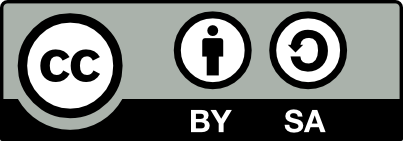QWERTY
QWERTY is the most common modern-day keyboard layout. The name comes from the first six letters (keys) appearing in the top left letter row of the keyboard, read left to right: Q-W-E-R-T-Y. The QWERTY design is based on a layout created for the Sholes and Glidden typewriter and sold to Remington in the same year, when it first appeared in typewriters. It became popular with the success of the Remington No. 2 of 1878, and remains in use on electronic keyboards due to thenetwork effect of a standard layout and a belief that alternatives fail to provide very significant advantages.[1] The use and adoption of the QWERTY keyboard is often viewed as one of the most important case studies in open standards because of the widespread, collective adoption and use of the product, particularly in the United States.
History and purposes
Qwerty is still used to this day. This layout was devised and created in the early 1870s byChristopher Latham Sholes, a newspaper editor and printer who lived in Milwaukee. With the assistance of his friends Carlos Glidden and Samuel W. Soulé he built an early writing machine for which a patent application was filed in October 1867
Properties
Alternating hands while typing is a desirable trait in a keyboard design, since while one hand is typing a letter, the other hand can get in position to type the next letter. Thus, a typist may fall into a steady rhythm and type quickly. However, when a string of letters is done with the same hand, the chances of stuttering are increased and a rhythm can be broken, thus decreasing speed and increasing errors and fatigue. In the QWERTY layout many more words can be spelled using only the left hand than the right hand. In fact, thousands of English words can be spelled using only the left hand, while only a couple of hundred words can be typed using only the right hand. In addition, most typing strokes are done with the left hand in the QWERTY layout. This is helpful for left-handed people but to the disadvantage of right-handed people.
Comparison to other keyboard input systems
DVORAK and QWERTY have been compared by some people to other systems which involve keyboard input systems, namelyStenotype and its implementations e.g. opensource PLOVER [1]. There are numerous advantages to using these systems (namely a 700% increase in efficiency over QWERTY [2]) but they are fundamentally different from ordinary typing. Words are input by pressing on several keys and releasing simultaneously but don't require the keys to be pressed down in any order. Neither is the spacebar used. There is a learning hurdle in that hunt and peck does not work. However, it is easy to write at 180-300 wpm. It is worth noting that PLOVER stenotype theory required a stenotype machine prior to 2010; due to the inherent difficulties of chording QWERTY was invented to allow cheap machines to be made that didn't jam up; stenotype was invented for maximum speed and accuracy.
The first typed shorthand machines appeared around 1880, roughly current with QWERTY, but the first stenotype machines appeared in 1913. Also, these machines' output needed to be interpreted by a trained professional, comparable to reading Gregg shorthand, which was very much in vogue at the time and taught publicly until the 1980s. Gregg shorthand also didn't require much more than training and a pen, however machines gradually gained traction in the courtroom. Modern PLOVER immediately provides translated output, making it very much like other keyboard setups that immediately produce legible work.
Half QWERTY
A half QWERTY keyboard is a combination of an alpha-numeric keypad and a QWERTY keypad, designed for mobile phones.In a half QWERTY keyboard, two characters share the same key, which reduces the number of keys and increases the surface area of each key, useful for mobile phones that have little space for keys.It means that 'Q' and 'W' will share the same key and the user has to press the key once to type 'Q' and twice to type 'W'.
Displaced QWERTY
Also designed for mobile devices, the displaced QWERTY layout allows for the increase of button area by over 40% while keeping the same candybar form factor. Entering, spacing and deleting are handled by gestures over the text area, reducing the keyboard's screen footprint. The layout is essentially a rearrangement of keys on the right half of the keyboard under those on the left and, as such, should present a gentler learning curve to touch typists. It was first seen on the iPhone application "LittlePad".

No comments:
Post a Comment